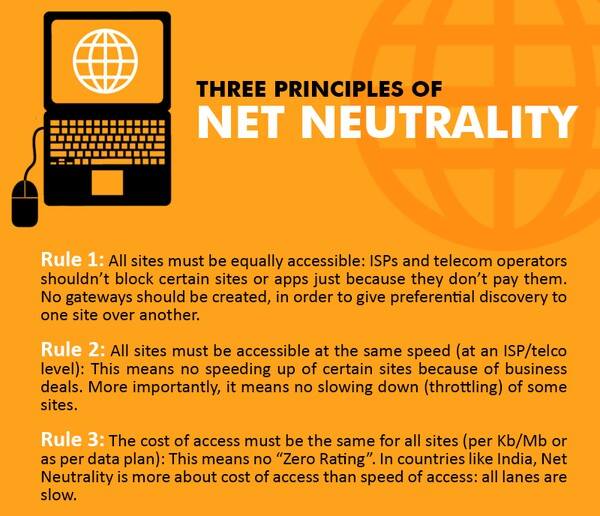Almost everything in the tangible world has a location attached. In the future Data Economy, map information is going to be one very important piece of information.
The Government of India announced a policy and new guidelines of using Mapping and relaxed the Policymaking it simple enough, aiming at unbundling the economic value across all sectors in the economy.
Click here to read the entire notification issued by the Ministry of Science and Technology, Government of India.
iSPIRT organised a panel discussion on the policy announcement to understand the policy and its importance for India. This blog post is an exciting read and listen for young innovators wanting to reimagine the economy as almost each and every thing will require mapping.
Following participants took active part in discussions.
- Lalitesh Katragadda, Co-Founder of Indihood
- Umakant Soni, Co-founder & CEO of ARTPARK (AI & Robotics Technology Park), AI Foundry
- Mohit Gupta, Co-Founder of Zomato
- Sudhir Singh, Volunteer at iSPIRT (Policy Hacks Anchor)
Recorded Video Transcript
Subsequent to introduction, Sudhir Singh (anchoring the Panel) opened the discussion asking Lalitesh Katragadda to explain important features of Policy announced.
Lalitesh explaining the policy salient features said “all the other Map’s policies that used to exist in various departments currently stand null and void, and they are replaced by this one very simple policy that has been issued, and people who embark on Mapping don’t have to worry.
He further added, “ if you are Indian company you can map anything except for a small blacklist of attributes and features that you should not map, I’m sure will be related to military and security. And, you can map using whatever technology that you want, you can use lidar, you can use high-resolution cameras, underwater, over water, anything. You cannot just create Maps you can disseminate, sell and distribute.”
“The only restriction if anything is that international mappers are restricted to a higher level of resolution for security purposes and they can also have access to high resolutions Maps created by Indian entities. This new policy is so simple that it creates freedom to map”, he said.
Mohit Gupta said, “for me the most important thing is Government taking notice”, and “coming to an understanding about the digital infrastructure required to build high-quality businesses and services across a large spectrum of different areas”.
He also expressed his happiness on the news that the Indian Space Research Organisation (ISRO), a Government organisation and MapmyIndia a private Indian company are collaborating.
Mohit Gupta informed that they tried in the past, experimenting with various different players who provide mapping services both Indian and international and understand the importance of alternative options to handle both the precision mapping and business economics.
Umakant Soni started the discussion by quoting an example of google maps and how they had increased the cost from free to 10X to 20X and made it expensive to use their service and almost single-handed dependence upon them.
He said that, “fundamental thing that was different in the mobile revolution was the use of location” and that, “the immersion of the digital world into the physical world started with the whole mobile revolution and I think Zomato and Ola kind of companies have actually really profited from that”.
According to him, If out of every ₹4 that a business earns out of its services, it is spending ₹1 on mapping, then it is tough to sustain certain kinds of business models. Hence, it is a great move to create more options, thereby reducing the price in the long-term and benefit the Indian consumer.
He gave a perspective on the amount of value mapping technology and applications can unlock. Quoting the survey he explained 90% of the value lies in intangibles and this is not possible to unlock this value without having easy reformative mapping policy, that will help India to build the 5Trillion 10 Trillion Economy.
“The challenges that we are at 3 trillion, wanting to go to 10 trillion, and we are talking about additional 7 trillion out of that 90% i.e. 6.3 trillion is going to be in the digital domain. If you’re not own the critical pieces which are going to create the intangible assets, we will not be reaching 10 trillion. We might actually get to 3.7 or 4 trillion that’s it in another 10 years” explained Umakant.
The other perspective on the value that Umakant gave was on how Google is inherently underestimating its business targets of 5 billion revenue from mapping. Quoting Baidu’s estimates from China, he explained that more than 70% of this value is lying in the future data economy, where location and mapping data will actually flow from sensors, almost everywhere in our lives. According to him, this data will augment the present Satellite imagery and physical mapping.
“You will be able to catalogue and tag every single object that you see in the physical world around you and that is the future of mapping, and this policy, actually unleashing this whole system of innovation that is now possible because this tiny little camera has got lidar, you can actually see a single object, and that’s where the computing moving onto the edge”, said Umakant.
He further added that “I mean we have not even started to comprehend what it might be”, And “that’s why it’s great news for Indian start-ups founders. What is next right after the mobile revolution, I think Maps. You know combined with AI and robotics they are going to form the next big wave of change in terms of massive business potential we have”, said Umakant.”
On the question of whether we can go International, Lalitesh answered, “when we have the best mapping technologies available and that will only happen if we start in our own backyard.”
He had further explained that according to a rough guess not more than 15% of India is mapped and we need to map everything that matters in India for development. According to him, there is a lot of work to be done, it won’t happen with just one company building it.
He further added that “democratization can only happen if the underlying layers become accessible which is both coverages has to increase quality has to increase and that can only happen with large amounts of innovation” and making it as easy as creating websites’.
‘So, I am looking forward to a world where we have you know hundreds, if not thousands of mapping innovations coming”, he added.
Mohit expressed his agreement with Lalitesh on how unmapped India was and explained the Challenge it posed to them in food delivery even to urban dwellers.
He went on to explain how they had to innovate and add a pre-recorded voice (audio instruction) message for consumer location to solve a problem of precision mapping.
He said that the “Audio instructions “we had to launch and are being used very widely, the last mile addresses and ability to get last-mile addresses accurately is very poor as a result a lot of our riders would end up calling customers for last-mile instructions.”
“Reality is that, there is a lot of ground to be covered for maps”, he added.
He also informed that they do not like over-dependence on a single player and hence has been doing a pilot almost every year with MapmyIndia. He felt that MapmyIndia has also a room to improve and become competitive to existing major services.
Sudhir posed a question on how easy it will be to use maps and if the process of using mapping information will be as stringent as existing offline maps, which sometimes require the approval of a senior official like joint secretary of Government of India, to obtain a physical map and use.
Lalitesh answered, “policy calls for all the government agencies cooperating, obviously if not of security sensitivity, which is most of the mapping data, to be made accessible to Indian company I’m hoping see changes coming”
Maps that you can depend on how to run on good quality data otherwise they will fail so so this is really enabler I don’t look at the map a product at the map enabling piece of infrastructure that every you know digital entity in India needs to have access to
Lalitesh further went on to explain how mapping can change lending, by using mapping in property and land record. According to him, it has the potential to unlock more than 4 and a half-trillion dollars of capital both for small business.
****The End****
Disclaimer: The discussion and ideas expressed here should not be construed as legal advice. The discussion is conducted with Industry practitioners and experts for purpose of benefiting the Industry members in Software product, IT or ITeS Industry









